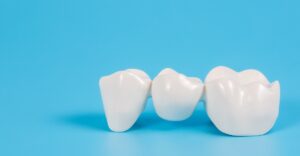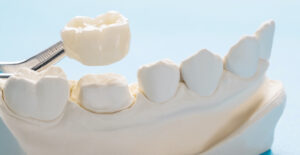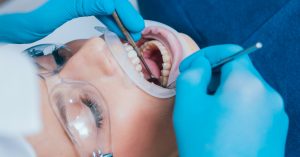Gum recession is a common dental condition in which the gum tissue surrounding the teeth recedes, exposing more of the tooth and its root. This can cause sensitivity to hot and cold temperatures, pain when brushing or flossing, and even tooth loss if left untreated. If you or someone you love suffers from this type of sensitivity, it would be best to speak with your dentist about treatment options. While there is no way to reverse gum recession completely, there are treatments available that can help restore some of the lost gum tissue. In this blog post, we’ll explore whether gums can grow back after recession and what treatments are available to help.
What Causes Gum Recession?
Gum recession is caused by a variety of factors, including poor oral hygiene, aggressive brushing or flossing, grinding or clenching teeth, smoking, certain medications, and periodontal disease. It’s important to visit your dentist regularly so they can identify any early signs of gum recession before it progresses further. Oral health impacts your overall health, so regular dentist appointments are critical.
Can Gums Grow Back After Recession?
The answer is yes! While it’s not possible to completely reverse gum recession, there are treatments available that can help restore some of the lost gum tissue. These include scaling and root planing (deep cleaning), soft tissue grafts (where healthy tissue from another area of the mouth is transplanted onto the affected area), and regenerative procedures such as guided tissue regeneration (where a membrane is placed over the affected area to encourage new tissue growth). Of course, every patient is different, and that’s why working with a skilled dentist is important; they will be able to accurately diagnose your issue and formulate a customized treatment plan to help you achieve optimal results. While many people prefer not to think about these more drastic options, keep in mind that for most people, good oral hygiene is enough to treat the issue.
Treatments for Gum Recession
The treatment for gum recession will depend on how severe it is and what has caused it. Your dentist will be able to advise you on which treatment option would be best for your individual case. Generally speaking, mild cases may only require good oral hygiene practices, such as regular brushing and flossing with a soft-bristled toothbrush. In contrast, more severe cases may require more invasive procedures such as scaling and root planing or soft tissue grafts.
In Closing
Gum recession is a common dental condition that can cause sensitivity to hot and cold temperatures, pain when brushing or flossing, and even tooth loss if left untreated. While it’s impossible to reverse gum recession completely, treatments can help restore some of the lost gum tissue. If you think you may be suffering from gum recession, then it’s important to visit your dentist as soon as possible so they can identify any early signs before it progresses further. At Warrier Family Dentistry, we want you to feel confident and pain-free. Contact us today to learn more!












